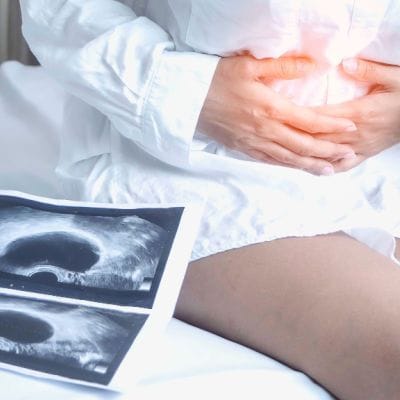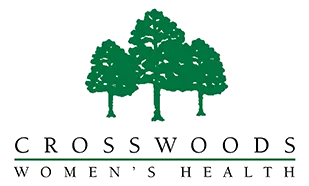
Ovarian cysts, fluid-filled sacs that form within or on the surface of the ovaries, are a common occurrence in women of reproductive age. This article delves into the intricacies of ovarian cysts, exploring their causes, symptoms, diagnostic methods, and available treatment options.
Understanding Ovarian Cysts
Definition and Types: Ovarian cysts are fluid-filled sacs that can develop on or within the ovaries. There are various ovarian cysts, including functional cysts, dermoid cysts, cystadenomas, and endometriomas. Functional cysts are the most common and often resolve on their own.
Development and Lifecycle: Ovarian cysts can form during the menstrual cycle. In a typical cycle, follicles release eggs; if this process is disrupted, a cyst may develop. Most cysts are noncancerous and resolve without intervention.
Causes and Risk Factors
Functional Cysts: The most common type, functional cysts, result from the normal menstrual cycle. Follicular cysts form when an ovarian follicle fails to rupture and release an egg or when a mature follicle does not dissolve after releasing its egg.
Other Types: Dermoid cysts develop from cells that produce human eggs and may contain tissue like hair or skin. Cystadenomas originate on the surface of the ovaries, and endometriomas result from endometriosis, a condition where tissue similar to the lining of the uterus grows outside the uterus.
Symptoms and Signs
Often Asymptomatic: Many ovarian cysts are asymptomatic and go unnoticed. They are often discovered incidentally during a pelvic exam or imaging studies for unrelated issues.
Possible Symptoms: Symptoms may manifest when cysts grow larger or if complications arise. Common symptoms include pelvic pain or discomfort, a feeling of fullness in the lower abdomen, changes in menstrual patterns, pain during intercourse, and frequent urination.
Diagnosis
Pelvic Exam: Healthcare providers may palpate the ovaries to check for abnormalities during a pelvic exam. However, small cysts may be challenging to detect through this method alone.
Imaging Studies: Ultrasound imaging is a valuable tool for visualizing ovarian cysts. It provides detailed images that help determine the cyst's size, location, and characteristics.
MRI or CT Scan: In some cases, an MRI or CT scan may be recommended for a more detailed view, especially if the cyst is complex or suspected of malignancy.
Treatment Approaches
Observation: Healthcare providers may opt for a "wait and see" approach for small, simple cysts that are asymptomatic. These cysts often resolve on their own within a few menstrual cycles.
Medications: Hormonal contraceptives, such as birth control pills, may be prescribed to regulate the menstrual cycle and prevent the formation of functional cysts. Pain relievers may also be recommended for symptom management.
Surgical Intervention: If a cyst is large, persists, causes significant pain, or appears suspicious, surgical intervention may be necessary. Minimally invasive laparoscopic surgery is commonly used to remove cysts while preserving the ovaries.
Complications and Outlook
Rupture: In some cases, cysts may rupture, causing sudden, severe pain. While this can be alarming, small ruptured cysts often resolve without medical intervention.
Torsion: Cysts may lead to ovarian torsion, where the ovary twists on its blood supply. This requires prompt medical attention and may necessitate surgery.
Malignancy Risk: While the majority of ovarian cysts are benign, some may be cancerous. Regular check-ups, especially for postmenopausal women or those with a family history of ovarian cancer, are crucial.
Prevention and Lifestyle Considerations
Regular Check-ups: Routine gynecological and pelvic exams enable early detection and monitoring of ovarian cysts.
Healthy Lifestyle Habits: Maintaining a healthy weight, practicing safe sex, and managing conditions such as endometriosis can contribute to overall ovarian health.
Conclusion
In conclusion, understanding ovarian cysts empowers women to navigate their reproductive health confidently. While many cysts are harmless and resolve independently, vigilance and proactive healthcare practices, including regular check-ups and prompt reporting of unusual symptoms, are paramount. By unraveling the enigma of ovarian cysts, women can actively engage in their well-being, ensuring that potential concerns are addressed promptly and comprehensively.
Disclaimer:
The information on this website is provided for educational and information purposes only and is not medical advice. Always consult with a licensed medical provider and follow their recommendations regardless of what you read on this website. If you think you are having a medical emergency, dial 911 or go to the nearest emergency room. Links to other third-party websites are provided for your convenience only. If you decide to access any of the third-party websites, you do so entirely at your own risk and subject to the terms of use for those websites. Neither Crosswoods Women's Health, nor any contributor to this website, makes any representation, express or implied, regarding the information provided on this website or any information you may access on a third-party website using a link. Use of this website does not establish a doctor-patient relationship. If you would like to request an appointment with a health care provider, please call our office at (614) 431-1634.


